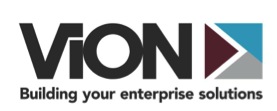This blog post is an excerpt from GovLoop’s recent guide, the The Future of Cloud: 5 of the Latest Cloud Computing Trends in Government. Download the full guide here.
The average government IT executive is not overly concerned about the technical nuances of what is or is not considered cloud computing. While the National Institute of Standards and Technology certainly has provided the technical definition, it’s the business outcome that is most important.
The focus for IT execs is on getting employees and agency customers what they need, when they need it, and leveraging the cloud IT model to make that happen, said Ray McCay, Vice President Solutions Strategy at ViON. And perhaps the most important is the concept of when they need it, McCay stressed.
The biggest challenge is meeting those needs when there is little to no capital budget (CapEx) available to fund new projects. Most of the government’s IT budget is currently funding legacy applications and systems that keep agency operations running, but doesn’t provide funding for new innovations, better efficiencies, or cost savings. CIOs often refer to this way of operating as simply paying to “keep the lights on.”
As older workers retire, agencies are losing the skill sets required to run the infrastructure in their data centers, McCay said. “And quite frankly, that’s not what’s needed from their IT organizations anyway. What CIOs have to do to add value is be responsive to the business requirements. At the end of the day, what they need is a different business model.”
They need an operational expense, or OpEx, model that allows them to shrink spending if demands for IT resources shrink and increase spending if demands grow. “CIOs need to be able to quickly respond to a customer’s requirements — almost anticipating what their customers are going to need and having it in place before the customer even tells them,” McCay said.
The dominant Cloud OpEx model allows agencies to pay for the amount of IT infrastructure that they have access to (provisioned) on a monthly basis, but this arrangement technically does not enable agencies to pay only for what they actually use. Much less prevalent is another model that offers just that — a way to pay only for the resources that are used (within the larger amount of resources that are provisioned and available). This second approach substantially increases an agency’s ability to leverage the cloud model to achieve mission success.
At ViON, the company provides a virtualized infrastructure platform that can capture how much of the environment is actually being consumed and then bill agencies only for that consumption. This consumption-based pricing is available to agencies with private cloud and hybrid cloud deployments.
When asked why more agencies aren’t receiving this type of service from other vendors, McCay said, “It’s an awareness issue.”
“You can’t ask for something you don’t know exists,” he added.
As agencies move more of their IT resources to the cloud, they must also consider that all clouds are not created equal. Depending on the solution, different clouds have different characteristics, they perform differently and the availability of the cloud service for agency customers may vary. Plus, not all applications can function properly in many of the typical public cloud environments available today.
One misconception McCay often hears is that some applications are very demanding and too tough to manage in a cloud environment. But that needs to be clarified.
When it comes to cloud computing, one size does not have to fit all, and there is a cloud model that can meet even the most demanding business challenges agencies face. While commodity, public clouds are a good fit for some government applications, that’s not the case for all of them. “You have to make sure you understand your application, your environment, your needs, and then you pick the right architecture to solve your problem,” McCay said. “Agencies shouldn’t rush to the cloud without considering these things.”
He encouraged agencies not to lose site of why they want to move to cloud in the first place. “There’s a reason why you want to move to the cloud – not because you want to follow the crowd but it’s because you need a different business model,” McCay said. “You need to move to OpEx, you need to move to consumption-based pricing, you need to be able to flex your spending up and down, you need to be able to augment your staff, and you need to spend your time on other things. But you also need to run your applications and achieve mission success while you do it!”
It really comes down to the business strategy. Agencies have to figure out what it is they need, what they can afford, and how they want to pay for it – through an OpEx or a CapEx model.






Leave a Reply
You must be logged in to post a comment.